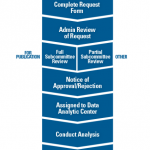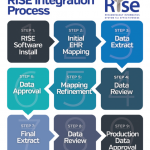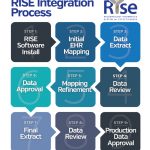Thus, CORRONA had to be on good terms with multiple constituents: physicians, site personnel, pharma executives and academic collaborators. CORRONA was exceptionally fortunate in that some very talented people were involved from the outset, including our superb chief biostatistician George Reed, PhD.
Jeff Greenberg, MD, MPH, was a young rheumatologist at New York University (NYU) who had been recommended to me. He had initially collaborated with CORRONA to fulfill the goals of a K award. Jeff recognized CORRONA’s potential with time and made the jump to a full-time employee in our fifth year. He has been an enormously valued contributor ever since.
Secret Sauce?
I have left out a key element without which the entire effort likely would have been stillborn: trust.
As noted, in these early years, CORRONA was challenged to pay physicians enough to make a substantial difference in their income. However, this was also a time when I was doing a series of frequent dinner talks with rheumatologists around the country. I would discuss my published research on MTX, as well as newly approved biologic agents. I had studied these drugs in my clinic and became a co-author on these high-profile publications. These research experiences informed my presentations to doctors around the country. I would always make it a point to feature CORRONA in my remarks as a much-needed means to determine how these drugs performed in the real world.
These rheumatologists and I belonged to the same band of brothers and sisters. I wasn’t some fast-talking, out-of-town salesman trying to sell the locals on a boondoggle in River City. It may sound self-serving, but it became apparent that I had a measure of credibility earned over decades of ACR presentations and publications on MTX, as well as the more recent publications on new biologic drugs. Jeff Greenberg would call this the secret sauce that encouraged participation—leadership from an individual whom doctors knew and trusted.
I very much honored that trust and also recognized a responsibility for open, honest and transparent communications.
A Fortunate Confluence of Circumstances
To review historical circumstances: I was a desperate clinical academic trying to create a different pathway to generate funds in order to free up time for research; there was an explosion of new and expensive drugs with their own novel safety concerns; there were the shared frustrations of other clinical academics who could participate in, and support, the vision; site physicians saw both the need for what the registry would provide and a measure of credibility of the messenger from decades of academic presentations and publications. It is a certainty the entire effort would have inevitably failed at multiple critical junctures without each and every one of these important elements.


